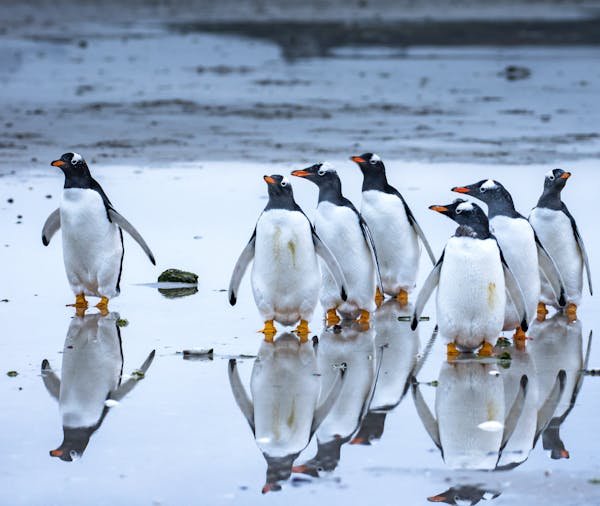
Introduction
Penguins are among the most beloved and intriguing creatures in the animal kingdom, and the term “Islanders Penguins“ might refer to penguin species that inhabit remote islands, far from mainland human interference. These birds have adapted to some of the harshest environments on Earth, thriving in icy landscapes and coastal regions where few other animals can survive. Their unique behaviors, social structures, and survival strategies make them a subject of endless fascination for scientists and wildlife enthusiasts alike. In this article, we will explore different aspects of island-dwelling penguins, from their habitats and diets to their breeding habits and conservation challenges.
1. The Unique Habitats of Island-Dwelling Penguins
Penguins that live on islands often inhabit regions with extreme climates, such as the sub-Antarctic islands or the Galápagos Islands near the equator. These environments provide them with the isolation needed to avoid predators while offering abundant food sources from the surrounding oceans. Unlike their mainland relatives, islander penguins have evolved to navigate rocky shorelines, dense vegetation, and sometimes even volcanic terrain. The Galápagos penguin, for example, is the only penguin species that lives north of the equator, relying on cold ocean currents to survive in a tropical climate. Understanding their habitats helps scientists learn how these birds adapt to changing environmental conditions.
2. Diet and Feeding Behaviors of Island Penguins
The diet of islander penguins primarily consists of fish, squid, and krill, which they hunt in the surrounding waters. Their feeding strategies vary depending on the species and location—some penguins dive deep into the ocean, while others prefer shallow coastal waters. For instance, the Rockhopper penguin, found on islands like the Falklands and Tristan da Cunha, is known for its agile swimming and ability to leap onto rocky shores. These penguins often travel long distances in search of food, demonstrating remarkable endurance. Overfishing and climate change, however, threaten their food supply, making conservation efforts crucial for their survival.
3. Breeding and Social Structures Among Island Penguins
One of the most fascinating aspects of islander penguins is their complex breeding behaviors. Many species form large colonies, sometimes numbering in the thousands, where they engage in elaborate courtship rituals. Male penguins often use vocal calls and physical displays to attract mates, while both parents take turns incubating eggs and feeding chicks. The King penguin, found on islands like South Georgia, has an extended breeding cycle that can last over a year, with parents carefully nurturing a single chick. These social structures highlight the intelligence and cooperation within penguin communities, ensuring the survival of future generations.
4. Conservation Challenges Facing Island Penguins
Despite their resilience, island-dwelling penguins face numerous threats, including climate change, habitat destruction, and human interference. Rising ocean temperatures disrupt their food supply, while pollution and oil spills pose direct dangers to their health. Invasive species, such as rats and cats, introduced by humans, often prey on penguin eggs and chicks. Conservation programs, such as protected marine areas and breeding initiatives, are essential to safeguarding these remarkable birds. Public awareness and sustainable fishing practices can also play a significant role in preserving penguin populations for years to come.
5. The Future of Island Penguins: Hope and Action
While the challenges are significant, there is hope for the future of islander penguins. Scientific research, eco-tourism, and global conservation efforts are helping to protect their habitats and ensure their survival. By supporting wildlife organizations and advocating for environmentally friendly policies, we can contribute to the preservation of these incredible birds. Penguins have thrived in some of the planet’s most extreme conditions for millions of years—with the right actions, they can continue to do so for generations to come.
Conclusion
Islanders penguins are a testament to nature’s adaptability and resilience. From their unique habitats to their complex social behaviors, these birds continue to captivate and inspire. However, their survival depends on our willingness to address environmental threats and protect their ecosystems. By learning more about these fascinating creatures and supporting conservation efforts, we can help ensure that island-dwelling penguins remain a thriving part of our planet’s biodiversity.